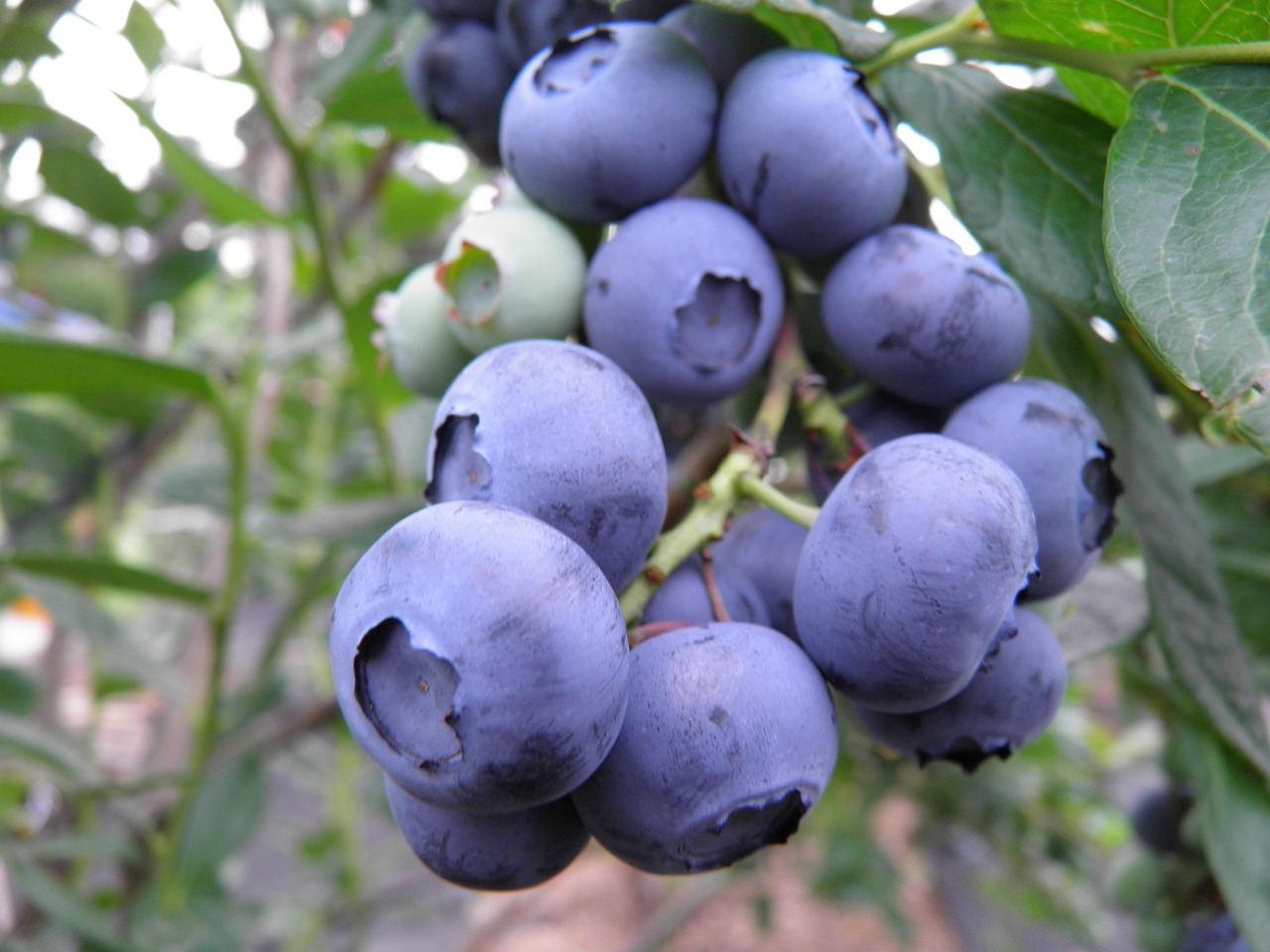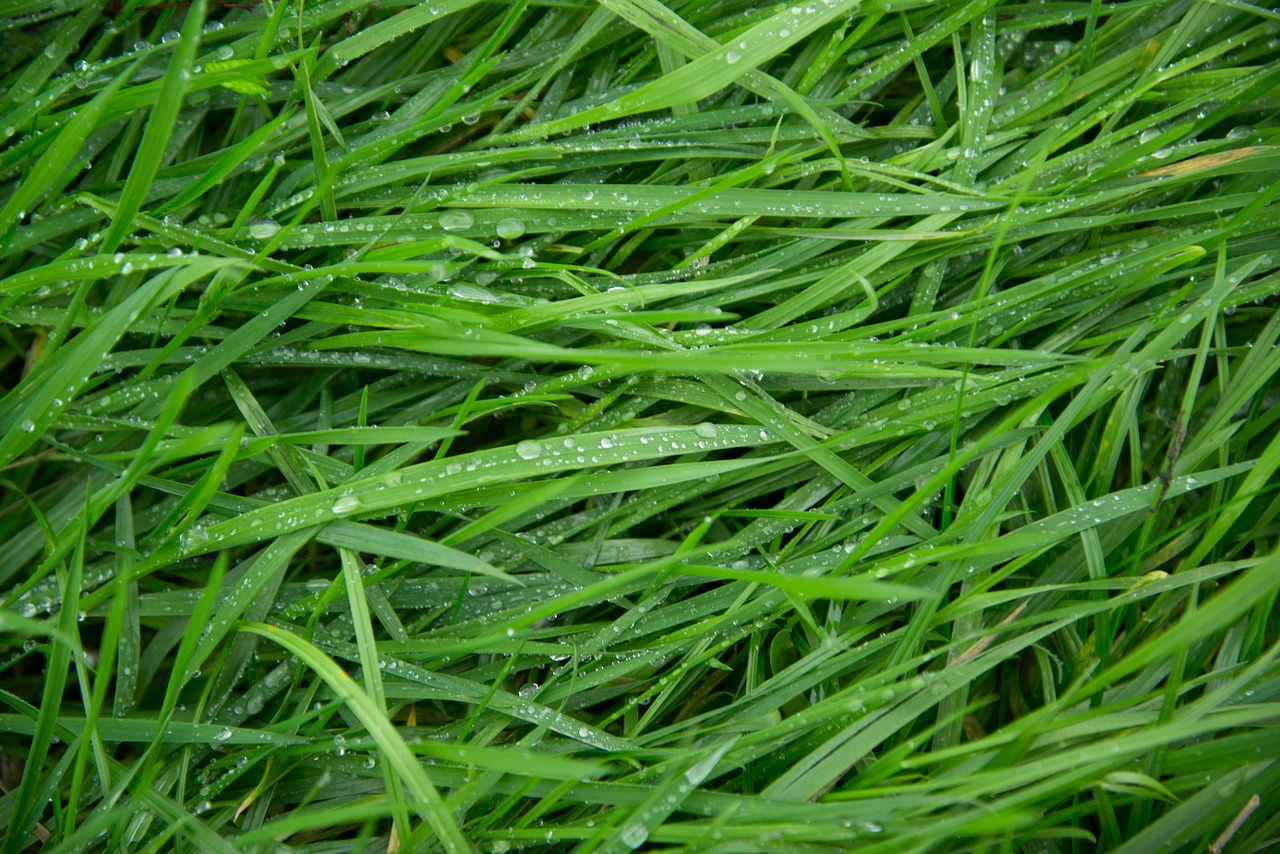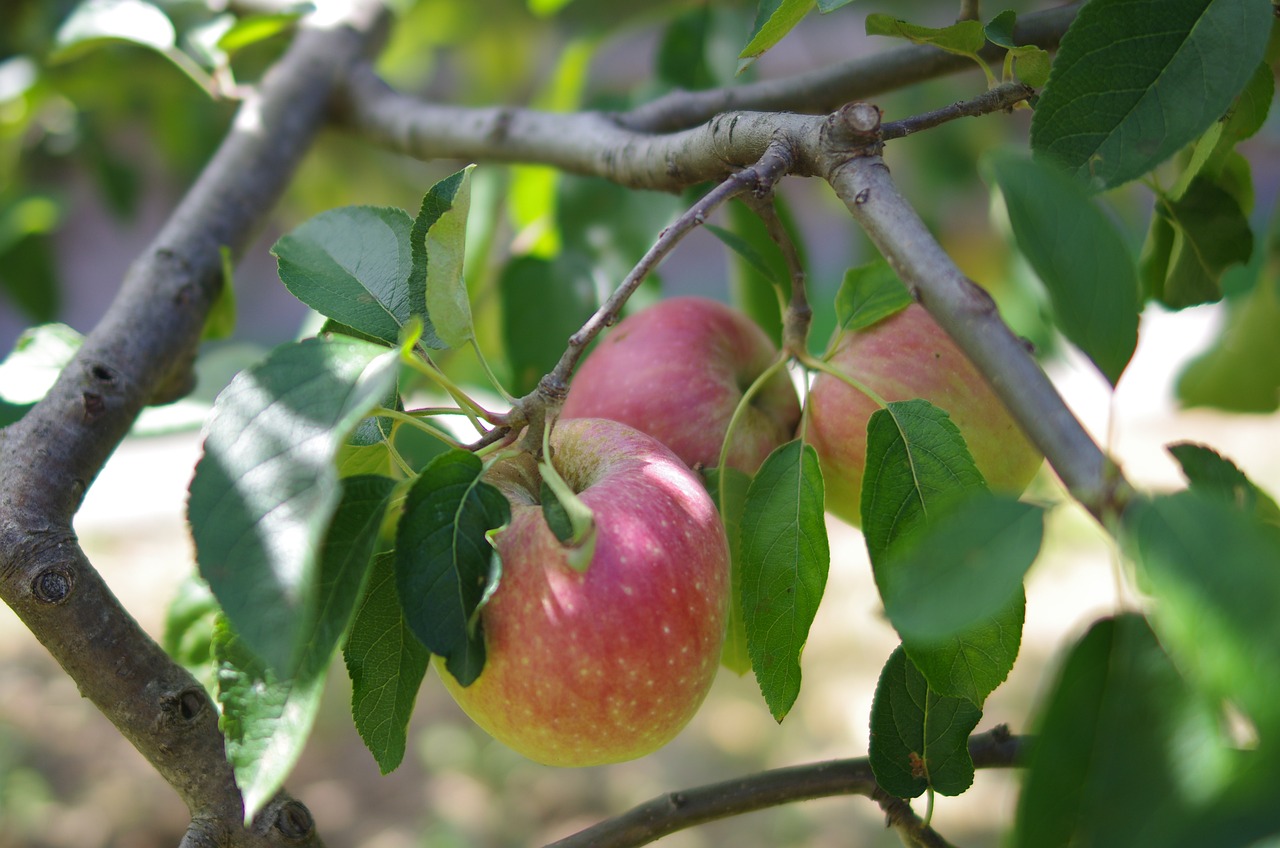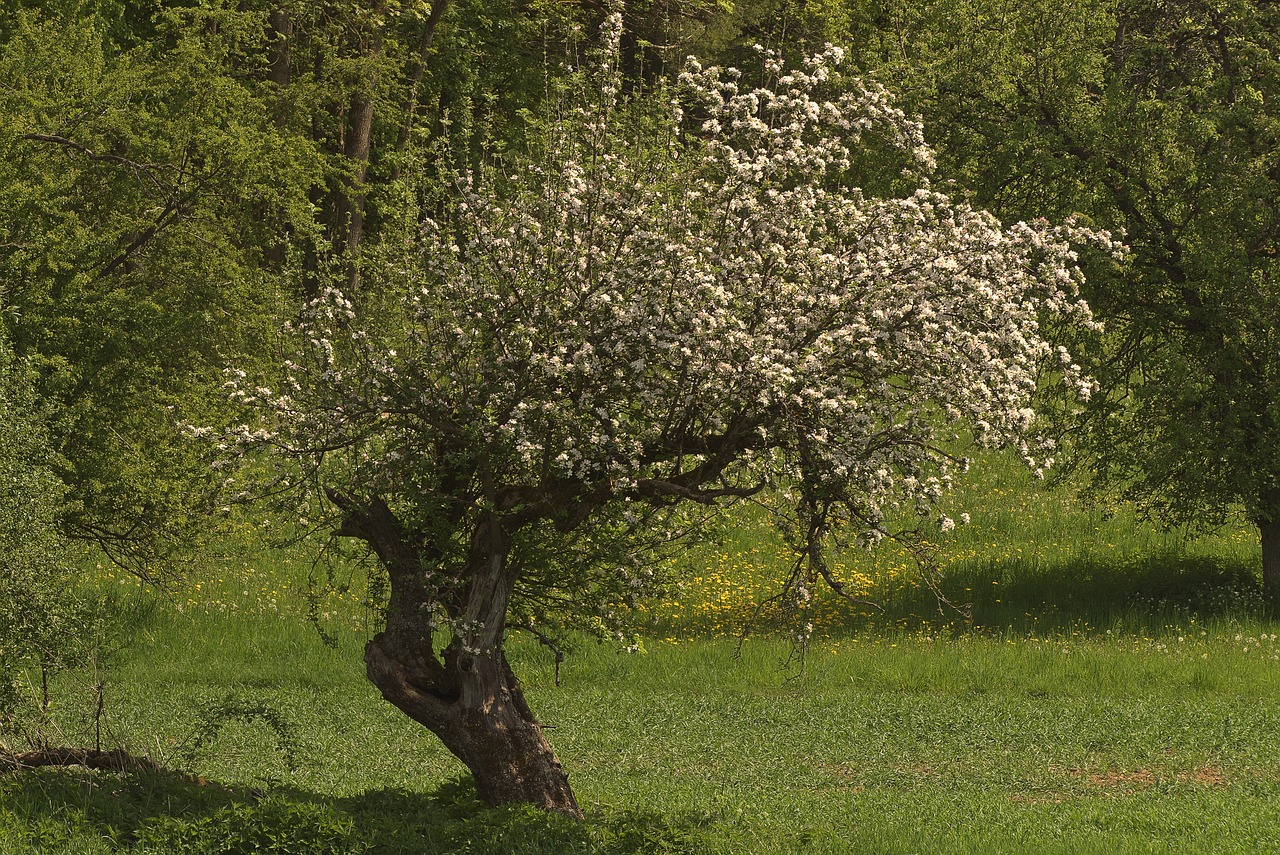How to Create an Eco-Friendly Orchard in Your Backyard?
Creating an eco-friendly orchard in your backyard is not just a fantastic way to enjoy fresh fruits; it’s also a commitment to sustainability and the environment. Imagine stepping outside to pick ripe apples or juicy peaches, all while knowing you’re doing your part to nurture the planet. This article will explore the essential steps to establish a sustainable orchard at home, focusing on eco-friendly practices, plant selection, and maintenance techniques that promote biodiversity and environmental health.
Selecting an ideal spot for your orchard is crucial. Think of your backyard as a canvas; the right location is the foundation for your masterpiece. Factors such as sunlight, drainage, and soil quality will significantly impact the growth and health of your fruit trees. Ideally, look for a location that receives at least 6-8 hours of direct sunlight each day. This exposure helps fruit trees to thrive and produce abundant yields. Additionally, ensure the area has good drainage to prevent waterlogging, which can lead to root rot. A simple soil test can also provide insights into the nutrient levels and pH balance, ensuring your trees get off to a healthy start.
Healthy soil is the foundation of a thriving orchard. Just like a house needs a solid base, your fruit trees need nutrient-rich soil to grow strong and productive. Conducting soil tests helps determine nutrient levels and pH, guiding you in making necessary amendments for optimal plant growth. You can easily purchase a soil testing kit or send a sample to a local extension service. Once you have your results, you can adjust your soil using organic matter like compost or well-rotted manure, enriching it with essential nutrients.
Choosing native and organic tree varieties contributes to local biodiversity. These trees are often more resilient to pests and diseases, reducing the need for chemical interventions. When selecting trees, consider varieties that thrive in your climate and soil conditions. Look for local nurseries that offer organic options, or even better, consider planting heirloom varieties that have adapted to your region over time. This not only supports biodiversity but also helps in creating a self-sustaining ecosystem in your backyard.
Implementing water-saving practices is essential for an eco-friendly orchard. Techniques like drip irrigation, rainwater harvesting, and mulch application help maintain moisture while minimizing waste. Drip irrigation delivers water directly to the roots, reducing evaporation and runoff. Rainwater harvesting systems can collect rainwater from your roof, providing a sustainable water source for your trees. Additionally, applying mulch around the base of your trees helps retain moisture in the soil and suppresses weeds, making your watering efforts more efficient.
Utilizing integrated pest management strategies can help control pests without harmful chemicals. Think of your orchard as a small ecosystem; every creature plays a role, and sometimes the best pest control comes from nature itself. Encouraging beneficial insects like ladybugs and lacewings can help keep pest populations in check. You can also use organic repellents made from garlic or neem oil, which deter pests without harming the environment. This natural approach not only protects your trees but also supports a balanced ecosystem.
Companion planting enhances biodiversity and can improve pest control. By strategically pairing plants, you can create a more balanced ecosystem that supports the health of your orchard. For example, planting marigolds near your fruit trees can repel harmful nematodes and attract beneficial insects. Similarly, herbs like basil and mint can enhance flavors while deterring pests. This symbiotic relationship among plants can lead to healthier trees and a more productive orchard.
Using organic fertilizers like compost and green manure enriches the soil without introducing synthetic chemicals. This practice promotes long-term soil health and supports sustainable fruit production. Composting kitchen scraps and yard waste not only reduces landfill waste but also provides a nutrient-dense amendment for your orchard. Additionally, green manure crops can be planted and tilled into the soil, adding organic matter and nutrients, further enhancing soil fertility.
Encouraging a diverse range of plants and wildlife in your orchard can enhance its resilience. Biodiversity supports ecosystem services and contributes to a healthier environment. Consider planting a variety of fruit trees, shrubs, and flowers to attract pollinators and beneficial insects. The more diverse your orchard, the better it can withstand pests and diseases. Plus, a vibrant ecosystem makes for a more beautiful and enjoyable space to spend time in.
Adopting sustainable harvesting practices ensures the longevity of your orchard. Techniques such as crop rotation and responsible pruning help maintain tree health and productivity over time. When harvesting, be mindful not to strip all the fruit at once; leaving some for wildlife helps maintain a balanced ecosystem. Regularly pruning your trees encourages healthy growth and prevents overcrowding, allowing each tree to flourish.
- What is the best time to plant fruit trees?
Generally, the best time to plant fruit trees is in early spring or fall when the weather is cooler, allowing the roots to establish before the heat of summer. - How can I tell if my soil is healthy?
Healthy soil is dark, crumbly, and full of organic matter. A soil test can provide detailed information about nutrient levels and pH. - What are some organic pest control methods?
Some effective organic pest control methods include using neem oil, insecticidal soap, and introducing beneficial insects like ladybugs.

Choosing the Right Location
When it comes to creating your own eco-friendly orchard, one of the most important decisions you'll make is choosing the right location. Think of your orchard as a home for your fruit trees; just like we need the right environment to thrive, so do they! The ideal spot will not only enhance the growth of your trees but also ensure that they remain healthy and productive for years to come.
First and foremost, sunlight is crucial. Most fruit trees require at least six to eight hours of direct sunlight each day. So, take a stroll around your yard and identify areas that receive ample sunlight. Keep in mind that trees, buildings, or fences can cast shadows, affecting the amount of light your orchard will receive. Imagine your trees basking in the sun like happy campers at a beach party!
Next up is drainage. Nobody likes soggy feet, and neither do fruit trees! Good drainage is essential to prevent water from pooling around the roots, which can lead to rot and other issues. If your yard has heavy clay soil, consider raised beds or mounds to help with drainage. Alternatively, you might want to plant your trees on a slope where water naturally drains away. It's like giving your trees their own cozy, dry bed to sleep in!
Soil quality is another critical factor. Healthy, nutrient-rich soil is the foundation for any successful orchard. Before you plant, it's wise to conduct a soil test to determine the pH level and nutrient content. This information will guide you on what amendments you might need. If your soil is lacking in nutrients, you can enrich it with organic matter, compost, or other natural fertilizers. Think of it as providing a delicious meal for your trees to grow strong and fruitful!
Additionally, consider the wind exposure in your chosen location. While a gentle breeze can be refreshing, strong winds can damage young trees and lead to poor fruit set. If your yard is particularly windy, think about planting a windbreak of shrubs or taller plants to protect your orchard. It's like giving your trees a sturdy shield against the elements!
Finally, don't forget to consider the proximity to water sources. While you want to avoid planting in low-lying areas that collect water, having a nearby water source can make irrigation easier. Whether it’s a rainwater collection system, a pond, or a simple hose, ensure that your trees can access water without too much hassle. After all, even trees need a refreshing drink on a hot day!
In summary, choosing the right location for your eco-friendly orchard involves a careful balance of sunlight, drainage, soil quality, wind protection, and water access. By paying attention to these factors, you'll set your fruit trees up for success, allowing them to flourish and provide you with bountiful harvests for years to come. Remember, a little planning goes a long way in creating your green paradise!

Soil Preparation and Testing
When it comes to creating an eco-friendly orchard, soil preparation and testing are like the foundation of a house; without a solid base, everything else can crumble. Healthy soil is crucial for the growth of your fruit trees, and understanding its composition is the first step in ensuring a successful orchard. Start by conducting a soil test, which will reveal important information about your soil's nutrient levels, pH balance, and overall fertility. You can purchase a soil testing kit from a local garden center or send samples to a laboratory for a more detailed analysis.
Once you have your soil test results, you'll gain insights into what your soil lacks. For instance, if your soil is low in nitrogen, you might consider adding organic matter like compost or manure. If the pH is too acidic or alkaline, you can make adjustments using lime to raise the pH or sulfur to lower it. Remember, the goal is to create a balanced environment that promotes healthy root development and nutrient uptake.
After addressing the nutrient deficiencies, it’s time to prepare the soil for planting. This involves tilling or loosening the soil to improve aeration and drainage. You can use a garden fork or a tiller for this purpose. Mixing in organic matter during this process not only enhances soil structure but also increases its water retention capabilities. A well-prepared soil will not only support your trees but will also encourage beneficial microorganisms that contribute to soil health.
Here’s a quick overview of the soil preparation steps:
- Conduct soil tests to understand nutrient levels and pH.
- Add necessary amendments based on test results.
- Till the soil to improve aeration and incorporate organic matter.
- Ensure proper drainage to prevent waterlogging.
In addition to testing and preparing the soil, it’s essential to monitor it regularly. Over time, soil quality can change due to various factors such as weather, tree growth, and even pest activity. Keeping an eye on your soil’s health will help you make timely adjustments to your orchard management practices. Just like a gardener tends to their plants, nurturing your soil will lead to a thriving, eco-friendly orchard that not only bears fruit but also contributes positively to your local ecosystem.
Q: How often should I test my soil?
A: It's recommended to test your soil every 2-3 years to monitor its health and nutrient levels.
Q: Can I prepare my soil in the fall for spring planting?
A: Absolutely! Preparing your soil in the fall allows it to settle and enrich over the winter months.
Q: What are some signs of poor soil health?
A: Signs include poor plant growth, yellowing leaves, and a hard, compacted surface that doesn’t absorb water well.

Selecting Eco-Friendly Tree Varieties
When it comes to establishing an eco-friendly orchard, the choice of tree varieties is not just an afterthought; it's a crucial decision that sets the stage for your entire gardening adventure. Imagine walking through your backyard, surrounded by vibrant fruit trees that not only provide delicious produce but also contribute positively to the local ecosystem. Choosing native and organic tree varieties is like planting a little piece of nature that thrives harmoniously with its environment.
Native trees are often better adapted to the local climate and soil conditions, making them more resilient against pests and diseases. This means less reliance on chemical interventions, which is a win-win for both you and the environment. For instance, if you live in the Northeast United States, consider planting apple trees that are native to the region. These trees are not only beautiful but also attract beneficial insects that can help pollinate your garden and keep harmful pests at bay.
Organic tree varieties are another excellent choice for your eco-friendly orchard. These trees are grown without synthetic fertilizers or pesticides, ensuring that the fruit you harvest is free from harmful chemicals. By opting for organic varieties, you contribute to a healthier food system and support sustainable farming practices. Plus, organic fruits often have richer flavors, making your homegrown produce even more delightful.
But how do you choose the right varieties? Start by researching which trees thrive in your specific region. Factors such as climate, soil type, and local wildlife should guide your selection. You might even want to visit local nurseries or agricultural extensions to get expert advice tailored to your area. Additionally, consider the following points when selecting your tree varieties:
- Pollination Requirements: Some fruit trees require cross-pollination to bear fruit. Make sure to plant compatible varieties nearby.
- Fruit Yield: Research the average yield of the varieties you're interested in. This will help you gauge how much fruit you can expect.
- Pest Resistance: Look for varieties known for their natural resistance to common pests and diseases.
Incorporating a mix of tree varieties can also enhance biodiversity in your orchard. This diversity not only attracts a wider range of pollinators but can also create a more balanced ecosystem. Think of your orchard as a miniature forest; the more diverse the plant life, the healthier the environment. For example, pairing apple trees with flowering plants can create a vibrant habitat that encourages bees and butterflies to visit.
In summary, selecting eco-friendly tree varieties is about more than just choosing what looks good in your yard. It’s about creating a sustainable, thriving environment that benefits both you and the planet. By opting for native and organic trees, you’re not only ensuring a bountiful harvest but also playing a vital role in preserving local biodiversity. So, roll up your sleeves, dig into that soil, and let your eco-friendly orchard become a reality!
1. What are the benefits of planting native trees?
Native trees are adapted to local conditions and require less maintenance. They also support local wildlife and contribute to biodiversity.
2. How do I know if a tree variety is organic?
Look for certification labels or ask your nursery about their growing practices. Organic trees are grown without synthetic fertilizers or pesticides.
3. Can I plant fruit trees in small spaces?
Absolutely! Dwarf and semi-dwarf varieties are perfect for small gardens or even container gardening. They provide the same delicious fruits without taking up too much space.
4. How can I ensure my trees are pollinated?
Plant compatible varieties nearby or consider adding flowering plants to attract pollinators like bees and butterflies.

Water Conservation Techniques
When it comes to creating an eco-friendly orchard, water conservation is not just a buzzword; it's a necessity. With climate change and increasing water scarcity, implementing effective water-saving practices in your orchard can make a significant difference. Think of your orchard as a living organism that thrives on careful nurturing, and just like any organism, it needs water to flourish. However, it’s crucial to use that water wisely. So, how can you ensure your fruit trees are getting enough moisture without wasting precious resources?
One of the most efficient methods is drip irrigation. Unlike traditional sprinklers that spray water indiscriminately, drip irrigation delivers water directly to the roots of your plants. This targeted approach not only conserves water but also reduces weed growth, as the surrounding soil remains drier. Imagine your trees sipping water through tiny straws, getting exactly what they need without any waste. It's a win-win situation!
Another effective technique is rainwater harvesting. By collecting rainwater from your roof and directing it into barrels, you create a sustainable water source for your orchard. This practice not only reduces your dependence on municipal water supply but also minimizes runoff, which can lead to soil erosion. You can easily set up a simple system using gutters and barrels, making it both an eco-friendly and cost-effective solution.
Additionally, applying mulch around your trees can significantly help in moisture retention. Mulch acts as a protective layer, reducing evaporation and keeping the soil temperature stable. Think of it as a cozy blanket for your plants, shielding them from the harsh elements while ensuring they stay hydrated. Organic materials like straw, wood chips, or even grass clippings can serve as excellent mulch options.
Moreover, consider the timing of your watering. Watering early in the morning or late in the evening minimizes evaporation and allows your trees to absorb more moisture. It’s like giving your trees a refreshing drink during the cooler parts of the day, ensuring they stay hydrated without wasting water. If you want to take it a step further, investing in a soil moisture sensor can help you monitor the soil's moisture levels, allowing you to water only when necessary.
In conclusion, implementing these water conservation techniques in your orchard not only promotes sustainability but also enhances the overall health of your plants. By being mindful of how you use water, you’re not just nurturing your trees; you’re also contributing to a healthier planet. So, why not give these methods a try? Your orchard—and the environment—will thank you!
- What is drip irrigation, and how does it work?
Drip irrigation is a method that delivers water directly to the roots of plants through a network of tubing and emitters. This system minimizes water waste and promotes healthy plant growth. - How can I start rainwater harvesting?
To start rainwater harvesting, install gutters on your roof that channel rainwater into barrels or storage tanks. Ensure that the system is properly filtered to keep debris out. - What types of mulch are best for conserving water?
Organic mulches like straw, wood chips, and grass clippings are excellent choices for conserving moisture in the soil while also enriching it as they decompose.

Natural Pest Management
When it comes to maintaining a thriving orchard, is your best friend. Instead of reaching for harmful chemicals that can disrupt the delicate balance of your garden, why not embrace a more eco-friendly approach? After all, who wants to invite trouble into their backyard? By employing natural methods, you can protect your fruit trees while promoting a healthy ecosystem. So, let's dig deeper into some effective strategies!
One of the first steps in natural pest management is to encourage beneficial insects. These little allies, such as ladybugs and lacewings, are nature's pest controllers. They feast on aphids and other pesky critters that threaten your trees. To attract these beneficial insects, consider planting a variety of flowering plants nearby. Flowers like marigolds, dill, and yarrow not only beautify your orchard but also serve as a buffet for these helpful bugs. Think of it as throwing a party for your garden’s guardians!
Another effective strategy is to use organic repellents. Many natural substances can deter pests without harming the environment. For instance, a simple mixture of water and soap can help eliminate aphids when sprayed directly onto affected plants. Additionally, garlic and chili pepper sprays can keep unwanted guests at bay. Just imagine your orchard as a fortress, with these organic concoctions acting as your moat! You can also utilize neem oil, derived from the seeds of the neem tree, which disrupts the life cycle of pests without harming beneficial insects.
Additionally, crop rotation plays a vital role in pest management. By changing the location of your fruit trees and other plants each season, you can prevent pests from becoming established in one area. This practice not only disrupts the pest life cycle but also enhances soil health. Think of it as giving your orchard a fresh start every year! Just like we need variety in our diets, plants thrive on diversity too.
Lastly, it’s essential to monitor your orchard regularly. Keeping an eye out for any signs of pest activity allows you to take action before problems escalate. Early detection is key! You might consider setting up a pest monitoring system using sticky traps or simply walking through your orchard to inspect the plants. Remember, an ounce of prevention is worth a pound of cure—so stay vigilant!
In summary, natural pest management is not just about keeping your trees safe; it’s about fostering a balanced ecosystem that thrives on its own. By encouraging beneficial insects, using organic repellents, practicing crop rotation, and monitoring your plants, you can create a vibrant and resilient orchard. Embrace these practices, and watch your garden flourish while contributing to a healthier planet!
- What are beneficial insects, and how can I attract them?
Beneficial insects are natural predators of harmful pests. You can attract them by planting a variety of flowering plants that provide nectar and pollen, such as marigolds, dill, and yarrow. - Are organic repellents effective?
Yes! Organic repellents like garlic and chili pepper sprays can deter pests effectively without harming beneficial insects. - How often should I monitor my orchard for pests?
Regular monitoring is crucial. Aim to check your orchard at least once a week, especially during the growing season.

Companion Planting Benefits
Companion planting is like throwing a party for your plants! By inviting the right companions into your garden, you can create a thriving ecosystem that not only enhances the growth of your fruit trees but also keeps pesky pests at bay. Imagine your orchard as a bustling community, where each plant plays a vital role in supporting its neighbors. This practice is rooted in the idea that certain plants can benefit from each other's presence, much like how friends can uplift and support one another.
One of the most significant advantages of companion planting is its ability to improve pest control. For instance, planting marigolds near your fruit trees can deter harmful insects due to their strong scent. This natural repellent reduces the need for chemical pesticides, making your orchard more eco-friendly. Additionally, some plants can attract beneficial insects, such as ladybugs and lacewings, which feed on pests like aphids. By fostering a diverse array of plants, you're essentially creating a sanctuary for these helpful critters.
Moreover, companion planting can enhance nutrient uptake in the soil. Certain plants, like legumes, have the unique ability to fix nitrogen in the soil, making it more fertile for neighboring plants. When you plant them alongside fruit trees, they not only enrich the soil but also improve the overall health of your orchard. Think of it as a nutrient exchange program where everyone benefits!
Another benefit of companion planting is its role in weed suppression. Dense planting can shade the ground, preventing weeds from taking root and competing for nutrients and water. This means less time spent weeding and more time enjoying the fruits of your labor. Plus, a well-planned orchard with diverse plantings looks more vibrant and inviting, making it a beautiful space to relax and connect with nature.
To give you a clearer picture, here’s a simple table showcasing some beneficial companion plants for your orchard:
| Fruit Tree | Companion Plant | Benefits |
|---|---|---|
| Apple | Chives | Deters aphids and enhances flavor |
| Cherry | Garlic | Repels pests and improves soil health |
| Pear | Comfrey | Attracts pollinators and enriches soil |
| Peach | Marigold | Deters nematodes and aphids |
In conclusion, companion planting is an invaluable strategy for anyone looking to create a sustainable and productive orchard. By embracing this practice, you not only promote biodiversity but also build a resilient ecosystem that benefits both your plants and the environment. So, why not give it a try? Start experimenting with different plant combinations and watch your orchard flourish like never before!
Q1: What is companion planting?
A1: Companion planting is the practice of growing different plants together for mutual benefits, such as pest control, improved growth, and enhanced nutrient uptake.
Q2: Can all plants be companions?
A2: Not all plants work well together. It's essential to research compatible plant pairs to ensure they support each other’s growth and health.
Q3: How can I start companion planting in my orchard?
A3: Begin by selecting a few fruit trees and researching beneficial companion plants. Plan your layout, keeping in mind the growth habits and needs of each plant.
Q4: Will companion planting eliminate the need for pesticides?
A4: While companion planting can significantly reduce pest problems, it may not completely eliminate the need for pesticides in every situation. It is best used as part of an integrated pest management strategy.

Organic Fertilization Methods
When it comes to nurturing your eco-friendly orchard, organic fertilization methods play a pivotal role. Unlike synthetic fertilizers that can harm the environment, organic options enrich the soil naturally, fostering a healthy ecosystem for your fruit trees. Imagine your orchard as a vibrant community, where each tree and plant supports one another. Organic fertilizers help create a thriving neighborhood in your soil, filled with beneficial microbes and nutrients.
One of the most effective organic fertilization methods is the use of compost. Compost is essentially nature's recycling system, transforming kitchen scraps, yard waste, and other organic materials into a nutrient-rich amendment. By applying compost to your orchard, you not only enhance soil fertility but also improve its structure, allowing for better water retention and aeration. Think of compost as a multivitamin for your soil, providing a wide range of nutrients that promote healthy growth.
Another fantastic option is green manure, which involves growing specific crops, like clover or vetch, and then tilling them back into the soil. This technique not only adds organic matter but also boosts nitrogen levels, which is essential for healthy plant growth. It's like giving your orchard a hearty meal that prepares it for the growing season ahead. Just imagine planting a cover crop, watching it flourish, and then turning it into a nutrient powerhouse for your trees!
Additionally, you can utilize animal manures, such as chicken or cow manure, which are rich in nutrients. However, it's crucial to compost these manures before applying them to your orchard. Fresh manure can be too strong and may harm your plants, much like a spicy dish that’s too hot to handle! Properly composted manure, on the other hand, is a gentle, nourishing option that can significantly enhance soil fertility.
Don't forget about the power of mulching. While often overlooked, mulch serves multiple purposes: it retains moisture, suppresses weeds, and, as it breaks down, it adds organic matter to the soil. Using materials like straw, wood chips, or shredded leaves not only helps maintain a stable soil temperature but also contributes to the health of your orchard in a sustainable way.
To sum it up, here are some organic fertilization methods that can truly make a difference in your orchard:
- Compost: Enriches soil and improves structure.
- Green Manure: Adds organic matter and boosts nitrogen levels.
- Animal Manures: Provides essential nutrients when properly composted.
- Mulching: Retains moisture and suppresses weeds while adding organic matter.
By embracing these organic fertilization methods, you’re not just feeding your trees; you’re nurturing the entire ecosystem in your backyard. Remember, a healthy orchard is a reflection of a healthy environment. So, roll up your sleeves, get your hands dirty, and watch your eco-friendly orchard flourish!
Q: How often should I apply organic fertilizers to my orchard?
A: It depends on the specific needs of your trees and soil. Generally, applying organic fertilizers in spring and fall is beneficial, but regular soil testing can help you determine the best schedule for your orchard.
Q: Can I use kitchen scraps directly in my orchard?
A: While kitchen scraps are great for composting, it's best to compost them first before adding them directly to your orchard to avoid attracting pests and to ensure proper breakdown.
Q: Is it safe to use animal manure in my orchard?
A: Yes, but make sure to compost it thoroughly before application. Fresh manure can be too potent and may carry pathogens that could harm your plants.

Maintaining Biodiversity
Maintaining biodiversity in your orchard is not just a trendy concept; it's a vital practice that can transform your backyard into a thriving ecosystem. Think of your orchard as a mini-universe where every plant, insect, and animal plays a role in the grand scheme of things. When you foster a diverse environment, you're not just planting trees; you're creating a habitat that supports various forms of life, which in turn enhances the health of your fruit trees and the overall ecosystem.
One of the most effective ways to maintain biodiversity is by incorporating a variety of plants in and around your orchard. This can include not only different species of fruit trees but also flowering plants, herbs, and vegetables. Each of these plants attracts different pollinators and beneficial insects, creating a balanced environment. For example, planting flowers like marigolds and sunflowers can attract bees and butterflies, which are essential for pollination. Additionally, herbs such as basil and mint can deter pests while providing culinary benefits.
Moreover, consider the structure of your orchard. A well-planned layout can enhance biodiversity. For instance, planting trees of varying heights and sizes can create layers in your orchard, providing different niches for wildlife. This stratification allows birds to nest in the taller trees, while smaller creatures can find shelter in the underbrush. Remember, a diverse habitat is a resilient one; it can better withstand pests, diseases, and environmental changes.
Another key aspect of maintaining biodiversity is the use of organic practices. By avoiding synthetic pesticides and fertilizers, you encourage a healthy population of beneficial insects, such as ladybugs and lacewings, which naturally control pest populations. Instead of reaching for chemical solutions, consider using natural repellents like neem oil or insecticidal soap. These methods not only protect your crops but also safeguard the myriad of life forms that coexist in your orchard.
It’s also essential to create habitats for wildlife. Simple additions like birdhouses, bat boxes, and insect hotels can significantly boost the diversity of species in your orchard. These structures provide shelter and breeding grounds for various organisms. For instance, bats are excellent for pest control, as they consume vast quantities of insects. Providing a welcoming environment for these creatures can lead to natural pest management, reducing your reliance on chemicals.
Finally, don’t underestimate the power of community involvement. Engaging with local gardening clubs or conservation groups can provide you with valuable insights and resources. Sharing your experiences and learning from others can help you discover new ways to enhance biodiversity in your orchard. Additionally, participating in local biodiversity initiatives can connect you with like-minded individuals who are equally passionate about creating sustainable environments.
In summary, maintaining biodiversity in your orchard is a multifaceted approach that requires thoughtfulness and commitment. By planting a variety of species, using organic practices, creating habitats, and engaging with your community, you can cultivate a vibrant ecosystem that not only supports your fruit trees but also contributes to the health of the planet. Remember, each small action you take can have a ripple effect, enhancing the beauty and productivity of your backyard paradise.
- Why is biodiversity important in an orchard?
Biodiversity enhances resilience against pests and diseases, promotes pollination, and supports a healthier ecosystem overall. - How can I attract beneficial insects to my orchard?
Planting a variety of flowers and herbs can attract beneficial insects, while avoiding synthetic pesticides helps maintain their populations. - What types of plants should I include to improve biodiversity?
Consider adding native flowering plants, herbs, and a variety of fruit trees to create a diverse habitat. - Can I maintain biodiversity in a small space?
Absolutely! Even small spaces can support biodiversity through careful plant selection and habitat creation.

Harvesting and Sustainability Practices
When it comes to harvesting your fruits, timing is everything! You want to pick them at their peak ripeness to ensure the best flavor and quality. But did you know that how you harvest can significantly impact the health of your orchard? For instance, using gentle techniques can prevent damage to the trees and encourage them to produce even more fruit in the following seasons. Think of it like a delicate dance; you wouldn't want to step on your partner's toes, right?
One of the most important sustainability practices is crop rotation. This method involves changing the types of crops grown in a particular area from one season to the next. By rotating your fruit trees and other plants, you can improve soil health, reduce pest buildup, and enhance nutrient availability. Imagine your soil as a sponge that needs different types of water to stay healthy. When you rotate crops, you're giving that sponge a chance to absorb various nutrients and maintain its structure.
Another vital practice is responsible pruning. Regularly trimming your trees not only helps them maintain a good shape but also promotes airflow and sunlight penetration. This is crucial for preventing diseases and encouraging healthy growth. Think of pruning as giving your trees a haircut; it keeps them looking sharp and helps them thrive! Remember to use clean, sharp tools to avoid introducing any pathogens into your orchard.
Implementing sustainable harvesting techniques is equally essential. For example, consider using integrated harvesting methods, which involve picking fruits in a way that minimizes waste and maximizes the use of your harvest. This could mean picking fruits that are slightly under-ripe if you're looking to store them longer or ensuring that every part of the tree is utilized. You can even create a schedule for harvesting different varieties, ensuring that your orchard remains productive throughout the season.
Here’s a quick table to summarize some sustainable harvesting practices:
| Practice | Description |
|---|---|
| Crop Rotation | Changing the types of crops grown to improve soil health and reduce pests. |
| Responsible Pruning | Regular trimming to promote airflow and prevent diseases. |
| Integrated Harvesting | Minimizing waste by picking fruits at optimal times. |
Finally, don't forget about the importance of keeping your orchard's ecosystem balanced. Encouraging biodiversity not only supports your trees but also attracts beneficial wildlife that can help control pests naturally. Consider planting a variety of flowers and shrubs around your orchard; they can serve as a habitat for pollinators and other helpful creatures. By fostering a diverse environment, you're not just creating a beautiful landscape, but you're also ensuring the longevity and health of your fruit trees.
In conclusion, sustainable harvesting practices are not just about the act of picking fruit; they encompass a holistic approach to orchard management. By integrating these practices into your routine, you're not only ensuring a bountiful harvest but also contributing to the health of your ecosystem. So, grab your basket, and let’s make every harvest season a celebration of sustainability!
- What is the best time to harvest fruits? It depends on the fruit variety, but generally, you should harvest when they are at peak ripeness for the best flavor.
- How often should I prune my trees? Regular pruning is recommended at least once a year, preferably in late winter or early spring before new growth begins.
- Can I use chemical fertilizers in an eco-friendly orchard? It’s best to avoid chemical fertilizers; instead, opt for organic options like compost or green manure.
- What are some natural pest management strategies? Encourage beneficial insects, use organic repellents, and practice crop rotation to manage pests effectively.
Frequently Asked Questions
- What is the best location for my eco-friendly orchard?
Choosing the right spot is key! Look for areas that receive plenty of sunlight, have good drainage, and possess healthy soil. Think of it like picking the perfect spot for a picnic; you want a place that feels just right for growth and enjoyment!
- How do I prepare my soil for planting fruit trees?
Start with soil testing to check nutrient levels and pH. This is like getting a health check-up for your garden! Based on the results, you can amend the soil with organic matter, ensuring your trees have the nutrients they need to thrive.
- Which tree varieties are best for an eco-friendly orchard?
Opt for native and organic tree varieties. These trees are like the superheroes of your orchard—they're naturally resilient to pests and diseases, which means you'll rely less on chemicals. Plus, they help support local biodiversity!
- What water conservation techniques should I use?
Implementing water-saving practices is crucial. Techniques such as drip irrigation and rainwater harvesting are fantastic! Think of them as your orchard's hydration plan, ensuring your trees get just the right amount of moisture without wasting a drop.
- How can I manage pests naturally?
Utilize integrated pest management strategies! Encourage beneficial insects like ladybugs, and use organic repellents. It's like having a natural security team for your orchard, keeping harmful pests at bay without resorting to harmful chemicals.
- What are the benefits of companion planting?
Companion planting is a game-changer! By pairing plants strategically, you can enhance biodiversity, improve pest control, and create a balanced ecosystem. It's like hosting a dinner party where every guest complements each other perfectly!
- How can I fertilize my orchard organically?
Using organic fertilizers like compost and green manure is the way to go! These methods enrich your soil naturally, promoting long-term health without the synthetic stuff. Think of it as feeding your orchard a wholesome diet!
- Why is maintaining biodiversity important in my orchard?
Biodiversity boosts resilience! Encouraging a variety of plants and wildlife in your orchard enhances ecosystem services, making it healthier overall. It's like creating a vibrant community where everyone contributes to a thriving environment.
- What sustainable harvesting practices should I adopt?
Adopting sustainable harvesting practices is essential for your orchard's longevity. Techniques like crop rotation and responsible pruning help maintain tree health and productivity. Think of it as giving your orchard a regular tune-up!



















